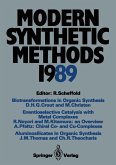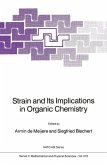Most standard texts in basic organic chemistry require the student to memorize dozens of organic reactions. This is certainly necessary to master the discipline. Unfortunately, most texts do not emphasize why these reactions occur and, just as important, why other reactions that might seem conceivable to the student do not occur. Without this understanding, students tend to forget what they have memorized soon after the course is over. It is the purpose of this book to familiarize the student with the principles governing organic reactivity and to provide a "feel" for organic chemistry that is impossible to secure by memory alone. Digesting the ideas in this book will, we hope, not only explain the common organic reactions but also allow the student to predict the prod ucts and by-products of reactions he has never seen before. Indeed, the creative student might even become capable of designing new reactions as might be required in a complex organic synthesis. In Chapter 1, we cover the basic principles including bonding, nuclear charge, resonance effects, oxidation-reduction, etc. It is a brief discussion, but it nonetheless provides the basis for understanding reaction mechanisms th~t will be treated later on. We highly recommend that this material be reviewed and that the v VI PREFACE problems be worked at the end of the chapter. Answers are given to all problems. In Chapter 2, reaction mechanisms are presented in an increas ing order of difficulty.
Dieser Download kann aus rechtlichen Gründen nur mit Rechnungsadresse in A, B, BG, CY, CZ, D, DK, EW, E, FIN, F, GR, HR, H, IRL, I, LT, L, LR, M, NL, PL, P, R, S, SLO, SK ausgeliefert werden.









